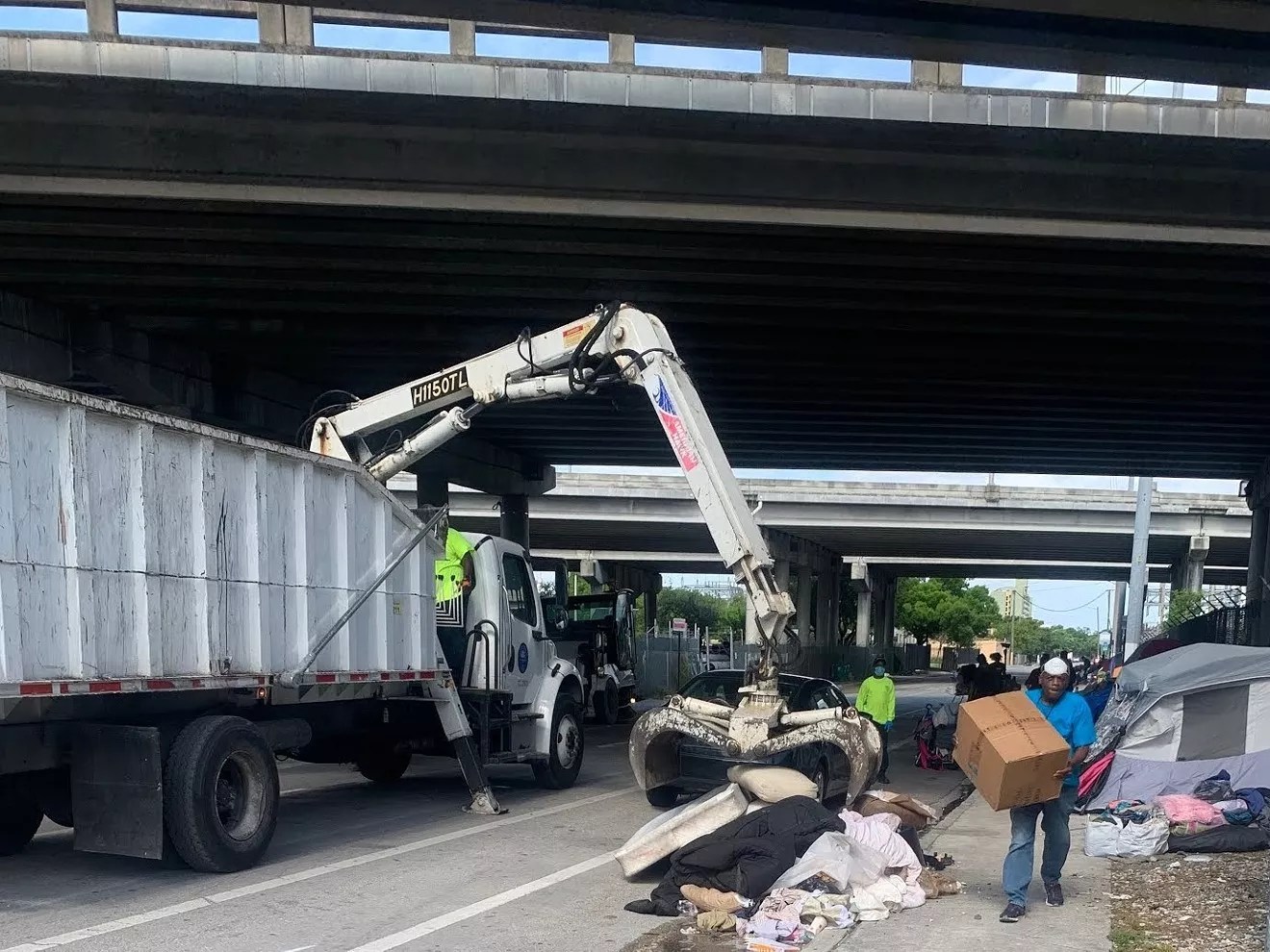
Photo by Rachel Gilmer

Audio By Carbonatix
As she strolled through a gentrified area of Midtown Miami, Gov. Ron DeSantis’ rapid response director Christina Pushaw posted an image on social media that captured a sidewalk in pristine condition with manicured trees and gardening.
“This is representative of what all the streets look like here,” Pushaw wrote on Twitter. “D.C. can definitely do better.”
Meanwhile, i saw this tweet while taking a walk in Midtown Miami, this is representative of what all the streets look like here. DC can definitely do better. pic.twitter.com/G643G3GZHV
— Christina Pushaw 🊠🇺🇸 (@ChristinaPushaw) February 19, 2023
To no one’s surprise, Miami natives did not agree with Pushaw’s picturesque portrayal.
Will you step up to support New Times this year?
At New Times, we’re small and scrappy — and we make the most of every dollar from our supporters. Right now, we’re $18,000 away from reaching our December 31 goal of $30,000. If you’ve ever learned something new, stayed informed, or felt more connected because of New Times, now’s the time to give back.
Of course Pooshaw only shows the nice areas of Miami. There’s also many areas that look like this pic.twitter.com/4SUVEXcbb8
— Rep. Elsie Stefanik (Parody) (@StefanikElsie) February 19, 2023
One Twitter user said what Pushaw is depicting is a “complete fabrication.”
“You’re showing an overdeveloped mall,” the user wrote, saying that if Pushaw snapped a photo a few blocks to the west, it would “ruin the mirage.”
Other users encouraged her to stroll out of the “Midtown bubble.”
Before undergoing a $2.3 billion redevelopment, Midtown was a “derelict rail yard.” Over the last 15 years, the area nestled between the art district of Wynwood and the pricey Design District has transformed into a bustling shopping mall with upscale high rises and restaurants.
The gentrified streets in Midtown now look like a tidy corner from the Truman Show. But after a few more minutes of walking, Pushaw might find a different scene, with cracked sidewalks, torn up roads battered by daily traffic, and an occasional turd of unknown origin.
We have made some progress since the 2015 poop map, through which the Downtown Development Authority pinpointed feces across several city blocks. Still, one Twitter user responded to Pushaw by saying they had multiple close encounters with human waste while walking to lunch downtown yesterday.
I walked by three different piles of human shit while walking to lunch in downtown today ð?¤·ð?»â?â??ï¸ https://t.co/DjEbu1Y0d6
— Melon Husk (@Squanch_Me) February 20, 2023
Though it may boast a host of art galleries, trendy restaurants, and stores, neighboring Wynwood doesn’t have the sterilized sheen Pushaw appears to admire either. There are some trash piles and potholes – and perhaps more inconvenient for those trying to clock political points on municipal aesthetics: chronically homeless people suffering on the streets.
An August 2022 census by the Miami-Dade County Homeless Trust indicated that the number of people living on the streets in the county increased 23 percent since the prior reporting period. The census estimated 2,598 people were living in shelters as compared to the 1,140 camped out on the street.
Just a short drive from the serenity of Midtown, people are living under highway underpasses and in homeless encampments, with their belongings, tents, and makeshift beds lining the sidewalks.
Since the termination of the Pottinger agreement in 2019, which provided court-enforced protections for homeless Miami residents, the city has ramped up efforts to clear the streets by forcing people out of encampments. The city throws away belongings and tidies up the sidewalks, displacing homeless residents who often move on and set up encampments elsewhere.
About a half-mile from where Pushaw took her stroll, a real estate agent, luxury car enthusiast, and alleged part-time serial killer murdered a homeless man off 21st Street in 2021, according to Miami police.